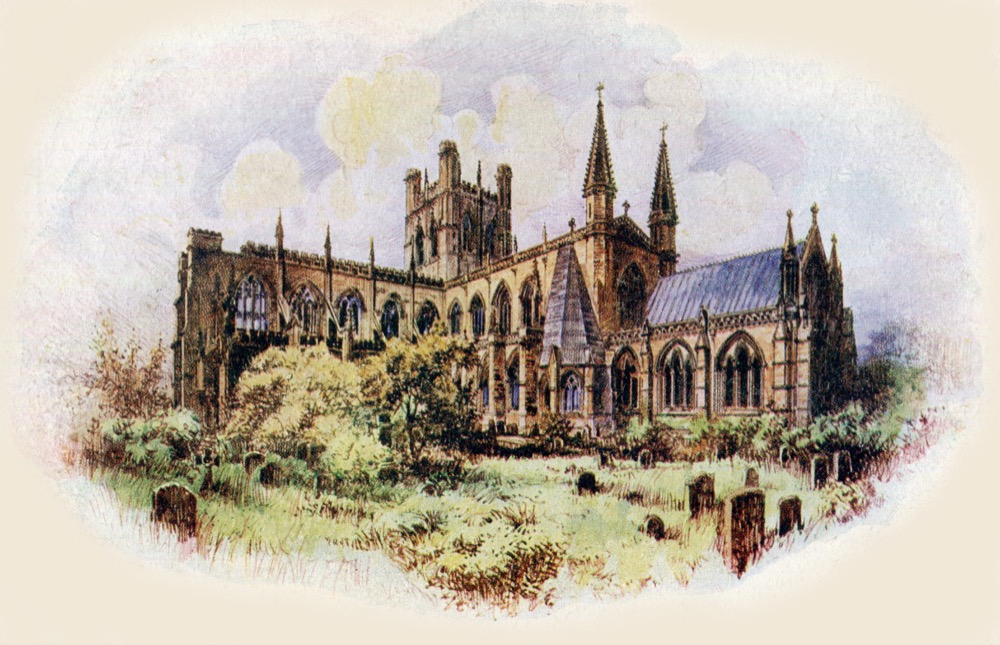New score complete for Active Cheshire, working with Chat Noir Productions Ltd.
Der Zippelfagottist
Working for a singer in the Cecilia Chorus of New York, I have been commissioned to produce rehearsal tracks to aid learning Der Zippelfagottist, for its premiere. The composition was written by Jonathan Breit and will be performed on 10th December at Carnegie Hall.
Rhuddlan Castle: Gateway to Wales
Rhuddlan Castle: Gateway to Wales is the latest Lost in Castles feature-documentary. The score is just under 70 minutes long. It follows on from the 45 minute score for Middleham Castle, 75 minute score for Sandal Castle and 90 minutes for Conwy Castle. The score for Rhuddlan will soon be available to buy / download. As with the previous films, it is a rich and melodic orchestral score. Before the DVD of Rhuddlan Castle is available, I will have the pleasure to score a short extra feature on Dyserth Castle, to appear on the same DVD. Here is a sneak preview of the Dyserth Castle reconstruction by Lost in Castles:
Pass on your passion
The final version of Active Cheshire's "Pass on your passion" campaign video
Advert for the National Kidney Federation
Chat Noir Productions Ltd were commissioned to produce a TV advert to raise funds for the National Kidney Federation. Here it is, with my finished score:
RepeatRepeat
English pottery company RepeatRepeat had previously commissioned a score for this video and were not completely satisfied with the end result. In such a case, as a replacement composer, it is vital to take onboard what a client requires because trust and expectation are fragile. This is the finished and accepted video for this lovely pottery collection.
Mail Boxes Etc. and the happy track
One of the challenges in meeting the needs of corporate clients is the request for happy music. This was the case for Mail Boxes Etc. The solution to compose "happy music" is not as simple as choosing a major key signature because the resulting composition can be hideously cheesy and undermine the branding of the company.
Through experience, I have observed that when clients request happy music they do not mean music that sounds happy but music that makes people feel happy. It is surprising that there is a difference and it is that difference that makes the composer's job difficult.
People perceive that popular music makes them feel happy, even if it is in a minor key, in the same way that people may listen to a sad love song and come away feeling uplifted. Is that happiness? This personal wedding edit was done to the track "Happy":
Compose a similar piece with the same ingredients and juxtapose it with a corporate promo and you will not necessarily produce the feeling of happiness. Much of the feel good quality of popular music comes from familiarity, unbroken rhythm and association with a famous artist. Take away the celebrity and the notoriety and you are left with music. And - more often than not - in isolation to those factors, it will not produce happy feelings.
It is not possible to write a piece of faux popular music for a corporate video because it will still lack the celebrity identity of the musician and the track's pre-existing place in culture. So how to solve the problem?
When a popular work is used by big business as soundtrack to adverts, the music plays, regardless of the images. And so I apply the same technique to corporate needs. It is not as much scoring as writing a piece of music that runs as though on tracks. It does not hit points as score should. It maintains a continuous rhythm and exploits tiny variations to avoid becoming tedious. This is not about optimum scoring, as though a composer is commissioned to be an artiste. This is about accommodating to a client's perception. And the one problem every composer faces in corporate work is that most clients like music, perhaps play music and regard themselves as expert enough to be far more critical than they would in another sphere of production.
The end result in this case is wallpaper music that is hardly perceived at all, but fills a gap with a warm and positive vibe.
WordWhile
Some months ago I was commissioned to write tracks for a word game app being produced in Canada. It is now available. Check it out here:
Made for web video series with Dan Solin
As US Financial Expert, Daniel Solin, launches his web video series, I'm pleased to share his YouTube channel:
https://www.youtube.com/danielsolin
The music combines strong original features of brand identity with scoring techniques, to keep each video fresh and engaging. Every video uses solo clarinet, performed by the composer, with development time spent improvising on the main themes. Occasional use of voice and live percussion are also employed.
Chester Philharmonic Orchestra at Chester Cathedral
Tonight, I had the pleasure of enjoying Chester Philharmonic Orchestra performing in the stunning setting of Chester Cathedral.
It was an ambitious programme of Beethoven and Brahms, playing to a large and appreciative audience in the heart of the Cathedral.
The concert began powerfully with Beethoven’s Fidelio. Conductor David Chatwin coped admirably with the large reverb of the Cathedral surroundings, allowing the drama of the piece to develop. The strings and timpani were especially dynamic. Fidelio proved to be a good choice to warm the orchestra up for Brahms’ Violin Concerto, with soloist Qian Wu. While not denying her technical facility in the rapid portions of this composition, she seemed to shine brightest in the lilting lyrical passages. The role of the orchestra in supporting a concerto soloist is never one to envy, but they gave a sensitive performance, maintained to the final bar.
After the interval, the last piece of the evening was Beethoven’s Pastoral – Symphony no. 6. This well-known composition has so much exposed writing that it is a good test of an orchestra’s ability. Coming at the end of a busy concert, they might have been tired but it didn’t show. The atmosphere of the concert was friendly and welcoming and a credit to the hard work of the dedicated musicians of Chester Philharmonic Orchestra.




